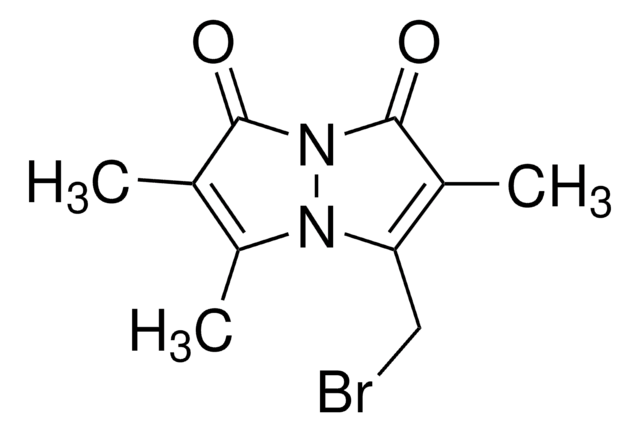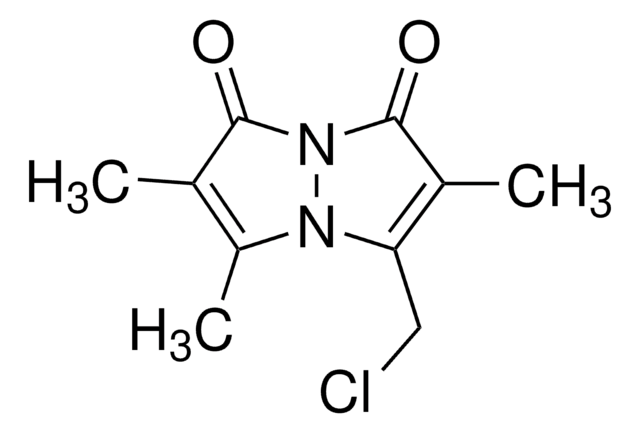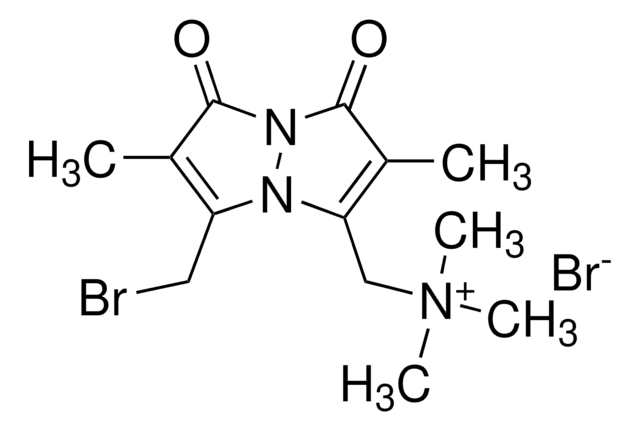B4380
Bromobimane
≥97% purity, powder
Synonyme(s) :
Monobromobimane
About This Item
Produits recommandés
product name
Bromobimane, ≥97% (HPLC)
Niveau de qualité
Pureté
≥97% (HPLC)
Forme
powder
Couleur
yellow
Pf
161 °C
Solubilité
acetonitrile: 20 mg/mL
ε (coefficient d'extinction)
4.6-5.1 at 396-398 nm in H2O
Application(s)
diagnostic assay manufacturing
hematology
histology
Température de stockage
−20°C
Chaîne SMILES
CC1=C(C)C(=O)N2N1C(CBr)=C(C)C2=O
InChI
1S/C10H11BrN2O2/c1-5-7(3)12-8(4-11)6(2)10(15)13(12)9(5)14/h4H2,1-3H3
Clé InChI
AHEWZZJEDQVLOP-UHFFFAOYSA-N
Vous recherchez des produits similaires ? Visite Guide de comparaison des produits
Description générale
Application
Bromobimane has been used for the quantitative measurement of free hydrogen sulfide in vivo and in vitro. It has been used for the labeling of proteins containing thiol groups.
Actions biochimiques/physiologiques
Code de la classe de stockage
11 - Combustible Solids
Classe de danger pour l'eau (WGK)
WGK 3
Point d'éclair (°F)
Not applicable
Point d'éclair (°C)
Not applicable
Équipement de protection individuelle
Eyeshields, Gloves, type N95 (US)
Faites votre choix parmi les versions les plus récentes :
Déjà en possession de ce produit ?
Retrouvez la documentation relative aux produits que vous avez récemment achetés dans la Bibliothèque de documents.
Les clients ont également consulté
Notre équipe de scientifiques dispose d'une expérience dans tous les secteurs de la recherche, notamment en sciences de la vie, science des matériaux, synthèse chimique, chromatographie, analyse et dans de nombreux autres domaines..
Contacter notre Service technique









